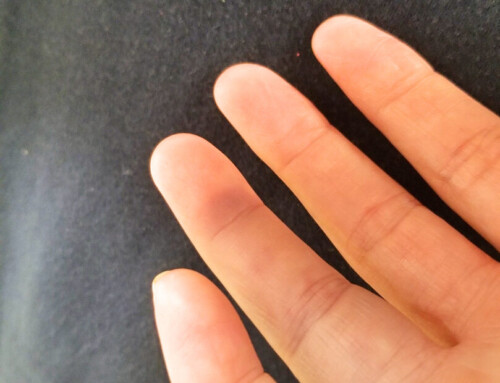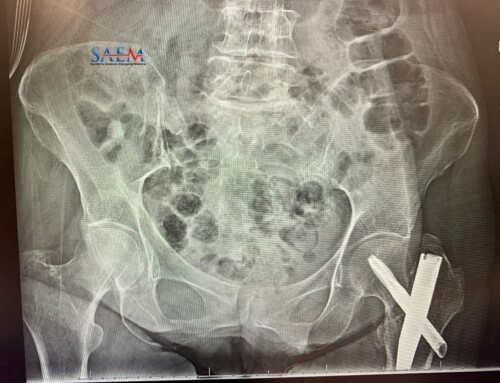 A patient presents with an anterior shoulder dislocation on x-ray. Your ED just received 5 new patients via ambulance and you are trying to prioritize your patients as they come in the door. What can you do for your patient with the shoulder dislocation in the meantime?
A patient presents with an anterior shoulder dislocation on x-ray. Your ED just received 5 new patients via ambulance and you are trying to prioritize your patients as they come in the door. What can you do for your patient with the shoulder dislocation in the meantime?
Approach
Stimson technique: Place the patient in the prone position with the arm pointing towards the floor. Apply a constant, 10-pound axial load on the dislocated arm to gradually fatigue and loosen the rotator cuff and deltoid muscles. Now you can walk away and triage the other potentially critically ill patients. Sometimes when you come back in 15-30 minutes, the shoulder joint has already self-reduced.
But how exactly DO you apply a 10-pound load onto the arm? I have seen 4 one-liter IV bags wrapped around the patient’s wrist in a tenuous fashion using heavy tape or kerlex gauze. I have seen patients be asked to hold onto awkwardly-shaped weights using the hand of the affected arm.
Trick of the Trade
Stimson technique with wrist restraints
Dr. Matthew Pirotte (Loyala EM faculty) came up with a great trick for the Stimson weight dilemma.
Use a padded, behavioral wrist restraint. The cloth ties provide a natural means to secure any weight that you have available. If you’ve seen these wrist restraints tested by very agitated patients, you’ll know that these wrist restraints can support a large amount of force without injuring the underlying soft tissue of the wrist. Especially nice is the plastic click-in clasp that can help secure the weight in place. Now you can loop-in a carrying bag holding 4 one-liter IV bags, or a 10-pound weight, if you happen to have that available.

![20130629_134445[1]](https://i0.wp.com/www.aliem.com/wp-content/uploads/2013/07/20130629_1344451.jpg?resize=443%2C338&ssl=1)



